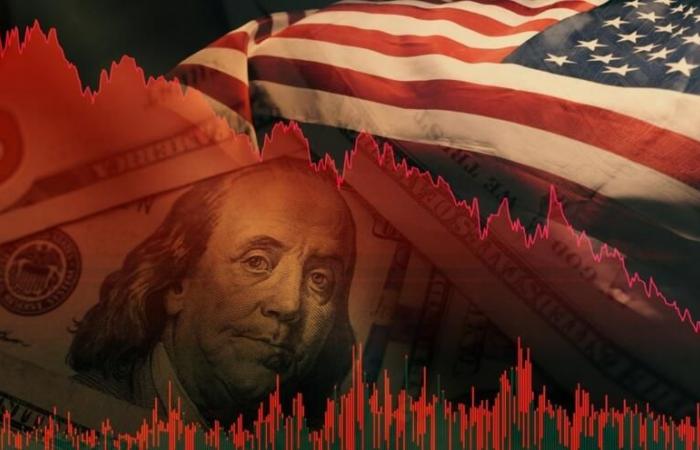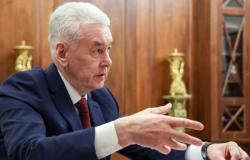In an article published in January, I provided that the dollar would continue its flight until the middle of the year at least, before starting a fall. Trump’s aggressiveness in economic matters could only draw the dollar towards higher levels, as the interest of investing in the United States becomes interesting. But this analysis found itself faced with an abnormal phenomenon: the end of the dollar attraction in times of crisis. This change shows that a change in international monetary order is underway. He could sign the final crisis of the American currency.
With the trade war waged by Trump, foreign companies have every interest in establishing themselves in the United States. This allows them not only to avoid customs duties, but also to benefit from the subsidies established under the Biden administration and still in force. Several multinationals including L’Oréal, Volkswagen, LVMH … have also multiplied the declarations in this direction.
These relocations to the United States attract new foreign capital. At the same time, global uncertainty is strengthening this influx, investors seeking to protect themselves financially by turning to assets labeled in dollars, perceived as the safest in the world. This dynamic should logically strengthen the American currency.
However, for several weeks, the dollar has dropped. He even recorded his largest decrease in four years. US markets are subject to a simultaneous sale of shares and bonds, which draws the dollar down. Even the technological clues, which are the wind in its sails, record considerable losses.
At first glance, we could attribute the evolution of the dollar to temporary phenomena: threats against countries seeking to move away from the American financial system (with prices of 100%), Trump’s repeated attacks on Fed independence, or the risks of interference in foreign affairs. However, this loss of attractiveness of the greenback surprises, especially since the trade war waged by the American president should, in theory, draw the greenback upwards. Customs duties generally have the effect of supporting the currency of the country which imposes them. By reducing the demand for imports, the United States limits the exchanges of dollars for foreign currencies, which tends to lower their demand and strengthen the relative value of the dollar. However, for the American currency to rise strongly, as in the past, the prices must remain in force over an extended period. Donald Trump recently returned to some of his statements.
International investors are also starting to doubt the solidity of the US economy. Inflation remains persistent and could stabilize around 3% by the end of the year, placing the Fed in a delicate position. In addition, budgetary programs are clearly diverting between the United States and other major economies. While Trump promises relatively modest tax support, China and Europe are preparing to intensify their public spending, even if they both cross very different crises.
The issues are deep. All of these phenomena are part of the continuity of authoritarian measures applied by the United States for several decades-from the extraterritoriality of American law to unilateral sanctions targeting arbitrarily designated states as Parias, like Iran in 2014, to the freezing of Russian assets in 2022. The offensive attitude of the Trump administration is only amplifying these tensions. Currency is based on confidence; However, if it crosses, monetary hegemony can tip over. We can already see it today with the global phenomenon of dedollarization and the recent will of Germany to repatriate its gold from the United States.
Any destruction carries in it the germs of new foundations. In the same way as the world becomes multipolar, financial initiatives tend to multiply – whether it is the implementation of cross -border programs (in China, Russia … and whose capacity becomes very powerful), the emergence of new currencies in international exchanges (rupees, yuan …), contracts backed by gas, oil transactions in other currencies, or dollar, Still joint development of digital central banking currencies. On this last point, the Bank of international regulations has also withdrew from the Mbridge project-which it had itself initiated after the health crisis-for the benefit of countries like China and other nations (Thailand, Saudi Arabia, United Arab Emirates …). If such an initiative were to be deployed on a large scale, it would represent a serious threat to the domination of the American financial system.
Above all, a major monetary uncertainty: that of the place that gold will occupy in the international financial system of tomorrow. As explained in previous articles, central banks buy gold at a historical pace, because the polycris that we live and the return of sovereignty creates a reinforced interest for independent active ingredients. Gold, as a secular value, plays a role that no one can measure today.
Admittedly, the dollar remains the main world currency. More than half of trade is denominated in American currency, almost 70% of financial transactions, 58% of exchange reserves are also held in dollars, even though the GDP of the United States represents only about a quarter of the world’s income. But this hegemony is weakening. And above all, American military power is faced with the force of the Sino-Russian axis whose investment in technological materials are unprecedented. However, monetary and military domination, intimately linked, is the condition sine qua non For a country to retain its status as a world power. This is how Italy dominated the world during the end of the Middle Ages, the Netherlands during the Renaissance, England from the 19th century …
In any event, Trump will seek to save the dollar. This can be done through aggressive rate drops, as required by the American president to the Fed, and the simultaneous injection of liquidity in dollars abroad. Such a policy would increase global demand in dollars and thus support its course, but could bring back inflation at the national level.
The United States is therefore preparing with different solutions: the integration of bitcoin in its reserves (in case its role in the international financial system is widening), or the global development of stablecoins backed by the dollar (for transactions without American regulatory constraint and attract foreign investors). The country also remains, officially, the largest gold holder in the world.
This monetary strategy, which is couple today to a desire for reindustrialisation, appears as a model of resistance to the great historical dynamics. Trump intends to preserve American hegemony at all costs. But the current decline in the dollar, in times of crisis, shows that its evolution now escapes all political will.
History is repeated. At the end of the 19th century, American industrial factories took precedence over British factories thanks to unrivaled prices. For two decades, China has gradually asserted itself as the new industrial power, stirring as a real workshop in the world. However, this does not guarantee its accession to the rank of first world power. Its political model limits this ambition: the absence of democracy imposes strict controls on capital movements, and despite its integration into the market economy, the country remains closed to the rest of the world. However, the current crisis that the dollar is going to mark an acceleration of the American decline …
Reproduction, integral or partial, is authorized provided that it contains all hypertext links and a link to the original source.
The information contained in this article has a purely informative nature and in no way constitute an investment council or a recommendation for purchase or sale.
-







